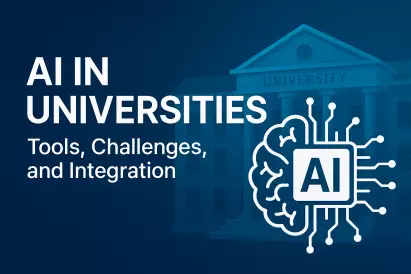Curriculum Transformation Towards Strategic Communication
Master’s education in corporate communication in North America is currently undergoing a significant shift, expanding from traditional business-focused content to broader strategic communication approaches. Programs are not only addressing corporate messaging but now include public, nonprofit, and academic spheres. This expansive perspective fosters deeper understanding of stakeholder dynamics and aligns communication with broader organizational missions beyond profitability.
One example of this shift can be seen in programs rebranding under “Strategic Communication,” highlighting the interdisciplinary role communication plays across sectors. This mirrors developments in public administration and governance, where stakeholder communication strategies are increasingly critical.
Embracing Technology: AI and Digital Communication Innovation
Technological innovation is a major force shaping both the content and delivery of communication education. AI, data analytics, and social media tools are revolutionizing how messages are created and distributed. Graduate programs are responding by incorporating data-driven communication strategies, digital storytelling, and AI-enhanced personalization into their curricula.
This tech-savvy approach reflects shifts in other fields such as Information Systems Management, where adaptability to emerging technologies is a core competency. As communication morphs into a two-way, interactive process, students must master tools for real-time engagement and integrated digital strategies.
Ethics, Transparency, and Authentic Brand Communication
In today’s climate, transparency and authenticity aren’t just ideals—they are non-negotiables. Stakeholders hold organizations accountable, demanding open communication about ethics, sustainability, and governance. Master’s programs are reinforcing these principles by integrating courses on corporate social responsibility, crisis communication, and inclusive language.
This ethical alignment mirrors developments in corporate social responsibility education, where ethical standards bridge policy and practice. Students are encouraged to build awareness of cultural sensitivities while applying communication strategies that foster long-term stakeholder trust.
Career Opportunities and Demand for Communication Professionals
Career prospects for communication experts are expanding in both volume and scope. A projected 13.7% growth in professional roles through 2033 underscores the rising demand for strategic communicators. Roles such as communication directors, chief communications officers, and media leads are increasingly occupied by those with master’s qualifications.
The degree opens doors across a breadth of industries—healthcare, technology, and digital media being notable examples. Specializations in areas like digital strategy or crisis management allow graduates to stand out. These trends align with the upward mobility seen in other strategic disciplines like innovation and project management.
Flexible Hybrid and Online Learning Models
Today’s learners are seeking flexibility, and graduate programs are delivering with hybrid or fully online options. These formats are advantageous for working professionals who want to continue their education without disrupting their careers. Institutions are merging professional development and degree pathways to facilitate lifelong learning.
This modular approach to education is also reflected in sectors like Executive MBA programs, which offer adaptable formats for executive-level students. Accessibility, convenience, and affordability are becoming central competitive factors among graduate schools.
Best Practices Emerging from Program Redesigns
Several best practices are surfacing from innovative program updates:
- Expanding communication programs beyond corporation-specific skills to encompass strategic roles across sectors.
- Integrating AI and data analysis to prepare students for the future of precision communication.
- Embedding ethical transparency as a core outcome of graduate communication education.
- Offering flexible program designs, including part-time and online options for adult learners and mid-career professionals.
These practices reflect a growing intersection between corporate communication and emerging fields like marketing innovation, where data, creativity, and ethical storytelling intertwine.
Statistical Insights and the Value of a Master’s Degree
While corporate communication remains popular at the undergraduate level, about 11.8% of business communication professionals in North America hold a master’s degree—a figure poised for growth. These professionals are often favored for leadership positions due to their strategic mindset and advanced technical proficiency.
Salary potential increases notably with a graduate degree, and professional development becomes more targeted and impactful. Similar trends are observable in high-demand areas like big data management, where postgraduate training delivers a definitive edge in employability and remuneration.
Embracing a Future-Ready Communication Framework
Master’s programs in corporate communication in North America are not only keeping pace with change—they are actively shaping the future. By blending technology, ethics, strategy, and flexible learning, they provide students with the tools to thrive in complex communication landscapes.
This transformation invites academic institutions, industry professionals, and students to innovate continuously and embrace the role of effective communication as a cornerstone for success in today’s transparent, tech-driven society. For a deeper look at top programs, explore our ranking of best Master’s in Corporate Communication.



